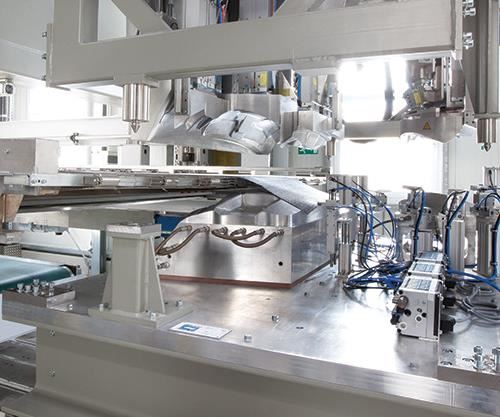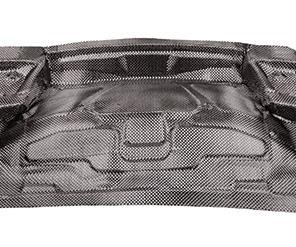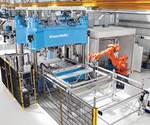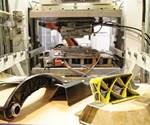Turnkey manufacturing systems: Simplifying automated HP-RTM
Having offered turnkey systems for composites since the 1990s for sheet molding compound (SMC), long fiber thermoplastic (LFT) and glass mat thermoplastic (GMT), Dieffenbacher (Eppingen, Germany) now has automated systems for high-pressure resin transfer molding (HP-RTM).
Dieffenbacher (Eppingen, Germany) began offering turnkey systems for composites in the 1990s, spanning multiple technologies, including sheet molding compound (SMC), long fiber thermoplastic (LFT) and glass mat thermoplastic (GMT). The company has now developed automated systems for high-pressure resin transfer molding (HP-RTM, see “HP-RTM on the rise" under "Editor's Picks,” at top right) and wet compression molding (see “Wet compression molding" under "Editor's Picks”). “The functions of a fully automated HP-RTM system are similar to that for SMC, although more challenging,” says Dieffenbacher technology and business development director Matthias Graf, “including unwinding and cutting fabric, stacking, preforming and loading the preform in and out of the press.”
Dieffenbacher has collaborated with KraussMaffei (Munich, Germany) since 2009, and also developed its alternating “driving tables” (shuttle tables) with BMW (Munich, Germany). “This was the most economical way to press structural CFRP parts,” says Graf. One was out of the press for demolding of the CFRP part and placing the next preform in the bottom mold while the other table was inside the press for resin injection and curing. Changeover time was only 15 seconds. Graf says the twin tables also enabled management of the myriad unknowns in the development of automated HP-RTM systems: cycle time, how to clean the molds, time required to load the preforms and whether online measurement was needed prior to mold close to ensure positional accuracy. “All of the early HP-RTM lines looked like this,” says Graf, “and enabled robotic mold-cleaning, off line.”
Two tables, however, required two bottom mold sections for every top mold section. “The mold sections are actually moved in and out of the press,” Graf explains, “with the heating and electrical staying connected, such that all functions stay operational for the mold.”
Today, many of the original uncertainties are understood. “Automated HP-RTM systems are now a proven technology, just like SMC,” says Graf. “We don’t have to clean every cycle. The internal mold release systems have developed sufficiently to enable continued cycling with occasional mold cleaning. There is also no need for QA checks after loading the preforms into the press, and demolding is not a big issue.” Graf says Dieffenbacher still offers twin-shuttle table systems, but this means 50% greater investment in the molds. “So now we offer a simple press with an automated mold-changing system and a mold set with one top and one bottom for each part.” Touted as capable of 120,000 parts/yr, based on three shifts/day, it can achieve 2-3-minute cycle times, depending on part dimensions. “We can preform in 90 seconds,” Graf says, noting that progress made here includes reducing material waste, “which is a large gain for our customers.”
This short article is a Side Story that accompanies a feature article on the subject of integrated composite-parts manufacturing systems, titled "Turnkey manufacturing systems: Materials, markets and maturation."
Related Content
-
3D-printed CFRP tools for serial production of composite landing flaps
GKN Aerospace Munich and CEAD develop printed tooling with short and continuous fiber that reduces cost and increases sustainability for composites production.
-
Large-format 3D printing enables toolless, rapid production for AUVs
Dive Technologies started by 3D printing prototypes of its composite autonomous underwater vehicles, but AM became the solution for customizable, toolless production.
-
Pultrusion: The basics
A primer describing what pultrusion is, its advantages and disadvantages, and typical applications.













.jpg;maxWidth=300;quality=90)



